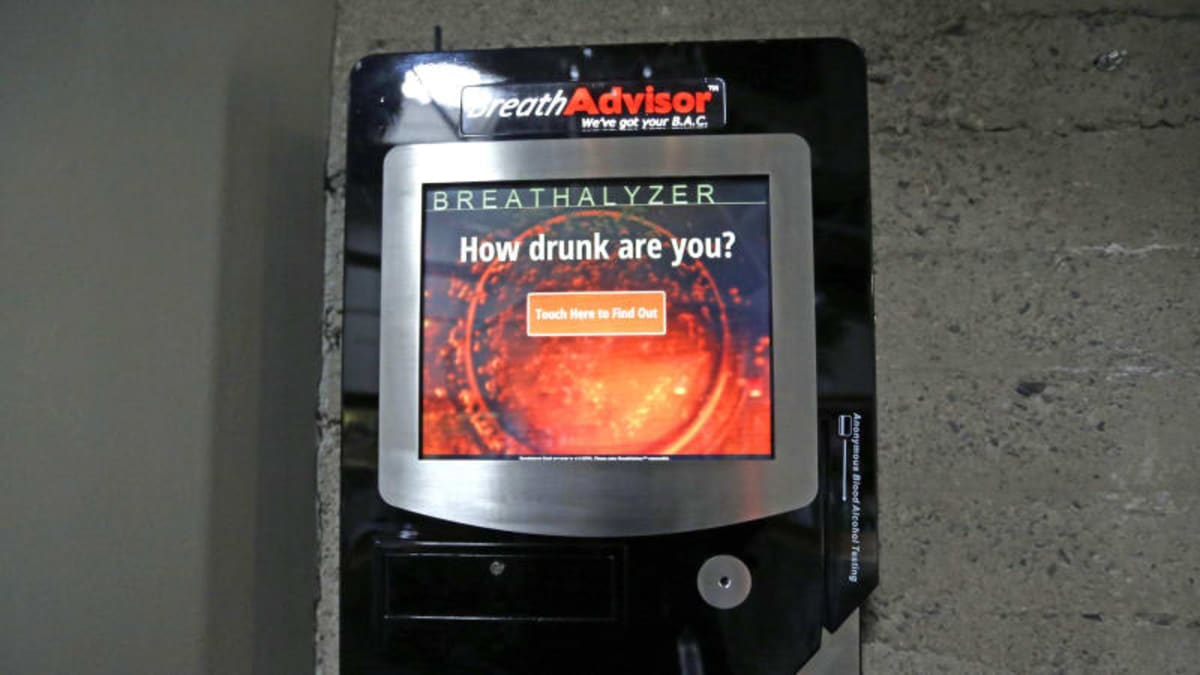The National Highway Transportation Safety Administration announced this week that its "Advanced Impaired Driving Prevention Technology" proposal has entered the public comment phase, meaning now is your chance to voice your feelings about new tech designed to passively monitor the blood alcohol content of drivers. If the new rules are adopted, the tech could become mandatory in all cars sold in the United States, Reuters reported Tuesday.
"Between 2011 and 2020, an average of almost 10,500 people died each year in alcohol-impaired driving crashes," NHTSA's report said. "The agency has seen record increases in overall traffic fatalities over the last few years of the COVID-19 pandemic, likely reflecting increases in alcohol- and drug-impaired driving."
"Concerted efforts by NHTSA, states, and other partners to implement proven strategies generated significant reductions in alcohol-impaired driving fatalities since the 1970s when NHTSA records began; but progress has stalled. While the causes of the recent fatality increases require further study, and NHTSA continues to support strategies to change driver behavior, more must be done to reach our goal of zero traffic fatalities," the report said.
NHTSA's recent push to make the tech mandatory stems from a report released following a fatal two-car accident that occurred in California in 2021.
The tech at the center of this push is not new, strictly speaking. In fact, it has been in development for at least the better part of a decade. The preferred system utilizes two detection methods. The first is a device similar to a standard breathalyzer mounted on the steering wheel, which can passively monitor the driver's breath; the second is a near-infrared light scanner installed in the ignition switch that can detect alcohol via the user's skin.
NHTSA also acknowledged that the tests must not only be effective, but reliable. Acting NHTSA Administrator Ann Carlson told Reuters that there are close to 1 billion separate daily driving journeys in the United States.
"We are trying to see, can we get it done, does the technology exist in a way that is going to work every time," Carlson said. "If it's 99.9% accurate, you could have a million false positives," Carlson said. "Those false positives could be somebody trying to get to the hospital for an emergency."
Members of the public will be able to comment on the proposed rules via http://www.regulations.gov/ (Docket # NHTSA-2022-0079). NHTSA's instructions for submitting comments are pasted below. They don't make it easy:
How do I submit a comment on Regulations.gov?
The "Comment" button can be found on the following pages:
- Docket Details page when a document within the docket is open for comment,
- Document Details page when the document is open for comment, and
- Document Search Tab with all search results open for comment displaying a "Comment" button.
Clicking "Comment" on any of the above pages will display the comment form. You can enter your comment on the form, attach files (maximum of 20 files up to 10MB each), and choose whether to identify yourself as an individual, an organization, or anonymously. Be sure to complete all required fields depending on which identity you have chosen. Please note that information entered on the web form may be viewable publicly. Once you have completed all required fields and chosen an identity, the "Submit Comment" button is enabled.
Upon completion, you will receive a Comment Tracking Number for your comment.
Some agencies also accept comments by mail, fax, or email. To find out if you can use one of these alternate methods, visit the document's section labelled "Addresses."
Users cannot submit comments on documents published by Non-Participating Agencies.
For step by step instructions, please see the Submit a Comment article.
Note: The comment due date on Regulations.gov is based on Eastern Time. For example, if the comment due date is 02/05/2019, then you have until 02/05/2019 11:59PM ET to complete your comment on Regulations.gov.
Related video:


Sign in to post
Please sign in to leave a comment.
Continue